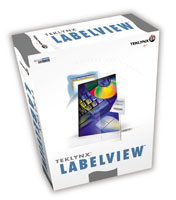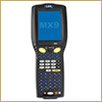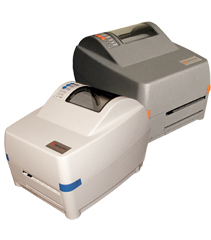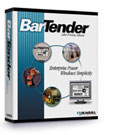The Patient Wristbands That Make the Most Cents—also Help Nurses
 Are you a hospital debating between laser and thermal printing for your wristbands? Read Zebra’s white paper, Calculating Total Cost of Ownership for Patient Identification Wristbands. It compares laser and thermal print technologies for ease of use, print quality, durability, and upkeep costs. The results might surprise you!
Are you a hospital debating between laser and thermal printing for your wristbands? Read Zebra’s white paper, Calculating Total Cost of Ownership for Patient Identification Wristbands. It compares laser and thermal print technologies for ease of use, print quality, durability, and upkeep costs. The results might surprise you!
Barcodes Threat to Secret Ballot, Lawsuit Alleges
A lawsuit filed in the state Supreme Court is aimed at blocking the use of bar codes on election ballots in Washington because they could be used to identify a voter’s choices.
The lawsuit alleges that more than 1 million Washington voters could have their secret vote preferences violated in counties that use certain ballot-tracking equipment. Elections officials say the claim is not true.
“In addition to violating statutory ballot secrecy standards, the use of ballot IDs threatens actual compromise of ballot secrecy,” declares the suit prepared by Knoll Lowney, an attorney who has filed suits in the past against targets such as Tim Eyman’s initiatives, U.S. Senate candidate Mike McGavick and the Building Industry Association of Washington.
Lowney estimated that one-third of eligible voters are affected in Washington, but Reed’s elections chief denied that there is any risk.
New Teklynx LABELVIEW 8.20.03 barcode software now available
 A new release of Teklynx LABELVIEW barcode label software is available for download. LABELVIEW 8.20.03 adds the following new features:
A new release of Teklynx LABELVIEW barcode label software is available for download. LABELVIEW 8.20.03 adds the following new features:
- New CAB, Cognitive, Intermec, and TallyGenicom printer drivers are available with LABELVIEW 8.20.03.
- Various reported defects are repaired with this new version.
- Works with Windows Server 2008: LABELVIEW has received “Works with Windows Server 2008” certification for 32- and 64-bit systems
LABELVIEW 8.20.03 is compatible and fully tested to work with the following TEKLYNX software products:
- BACKTRACK 6.0
- Pocket LABELVIEW
- LABEL ARCHIVE 2.05
Regional Hardware Chain Links Stores with Zebra Printers
Challenge:
A family-owned chain of 156 small town hardware stores in the Northeast was looking for a way to streamline operations at the outlets while making it easy to get information on daily activity back to headquarters. They selected a software product offered by one of Zebra’s solutions partners.
Application:
A software house specializing in the management of data and business processes for retailers had all the features a retail hardware company needed. It also had one feature this customer didn’t realize it needed: Zebra desktop printers. Over the years, the software company had seen the efficiencies created by pairing their system with a dedicated output device for the shelf labels, shelf talkers, and flags the customers would create.
Solution:
Instead of trying to customize their offering for the almost limitless number of retail hardware environments they might encounter, the software company forged partnerships with the manufacturers of best-of-breed hardware platforms from PCs to network systems, to servers. The desktop barcode printers they chose for all their installations are from Zebra. Teaming up with Zebra meant this software company only had to be distracted from their code one time. As soon as the Zebra printing language was integrated with the partner’s system, the desktop printer was “plug & play” wherever the software was installed.
Result:
By choosing a single vendor for barcode printers, the software developer simplified their own programming. A dedicated interface between the partner’s proprietary software and Zebra Desktop printers allows a seamless installation in the customer’s 156 small hardware stores. At the same time, it eliminates the need for unbundled buying decisions that would have consumed both time and money for the end user.
LXE Introduces MX9 Family of Ultra-Rugged Data Collection Computers for Harsh Environment Applications
 LXE Inc., the rugged mobile computer business of EMS Technologies, Inc., announced today the immediate availability of the MX9, MX9CS, and MX9HL Ultra-Rugged handheld computers, designed for use in a wide array of heavy industrial and outdoor data collection environments.
LXE Inc., the rugged mobile computer business of EMS Technologies, Inc., announced today the immediate availability of the MX9, MX9CS, and MX9HL Ultra-Rugged handheld computers, designed for use in a wide array of heavy industrial and outdoor data collection environments.
“The MX9 family of handheld computers further extends LXE’s reach into new markets and outdoor data collection applications.” states Steve Newell, LXE’s general manager. Replacing the popular MX5 series of handhelds, LXE has incorporated improvements and additional functionality requested by its existing customer and partner base. “We have seen a growing demand for ultra rugged computing products. The MX9 computer offers best-in-class performance along with special features such as GPS receivers for positional location applications. Interest in the product for agriculture, forestry and public safety markets, among others, demonstrates the need for high-reliability handheld computing solutions. Adding the MX9 family of computers to our portfolio of products will greatly extend the breadth of LXE products made available to our growing network of partners, for use in their solutions offerings.” Newell added.
The MX9 computer is in a class by itself, offering a host of features, including an outdoor display, multiple scanning and imaging options, back-lit keypads, built-in GPS positional location option, and 802.11 a/b/g, WWAN and Bluetooth communications options. The MX9 computer includes an IP67 rating and rugged packaging designed specifically for harsh outdoor environments. With low-temp batteries and built-in heater control capabilities, the MX9CS version of the handheld computer is ready for a variety of cold storage applications. The MX9HL version is compliant with Class 1 Div. 2 Hazardous Location environments. All MX9 computers ship with a PXA320 processor and industry-leading Windows® CE 5.0 operating system offering an open platform for application development. All versions also include LXE’s Toughtalk technology, supporting voice recognition applications.
Barcode Verifier mil-size guide
Use the table below to determine what barcode verifier is best for the barcode you need to verify.
| Barcode being verified | Barcode verifier mil size |
|---|---|
| UPC barcodes | 6 mil |
| 1D barcodes up to 7.5 mil | 3 mil |
| 1D barcodes between 7.6-13 mil | 5 mil |
| 1D barcodes between 13.1-25 mil | 10 mil |
| 1D barcodes over 25 mil | 20 mil |
New Datamax E-Class Mark II Barcode Desktop Printers: E-4205e & E-4304e
 A new generation of Datamax E-Class printers is now available. The E-Class Mark II takes this proven printer platform to a whole new level of performance, print quality, reliability, connectivity, and versatility to meet a broad range of applications. Features include:
A new generation of Datamax E-Class printers is now available. The E-Class Mark II takes this proven printer platform to a whole new level of performance, print quality, reliability, connectivity, and versatility to meet a broad range of applications. Features include:
- Fastest label delivery in its class
- Standard serial, parallel, & USB ports
- Optional built-in Ethernet and wireless 802.11b/g Ethernet networking ports
- User adjustable mechanism to handle a wide range of media
- Available in 2 colors: warm white or cool gray
- Compatible with a wide range of thermal printer command languages
Complete press release below:
Microscan Visionscape GigE

From an economical single-camera system to a sophisticated eight-camera configuration, Microscan’s Visionscape GigE platform contains all the necessary components for a complete machine-vision implementation. PC-based Gigabit Ethernet systems leverage standard network components, such as cabling, switches, and interface cards, while Visionscape software allows rapid deployment of your machine-vision application.
Visionscape GigE works with a full set of Microscan GigE cameras and can be used in applications for precise inspection, identification, guidance, gauging, and measurement. It decodes all standard linear barcodes, 2-D symbols, and stacked symbologies. Minimum PC requirements for Visionscape GigE software include a Pentium P4 class processor (2.4 GHz or higher), Windows XP or Vista, at least 1 Gbyte of RAM, an XGA display, and one open PCIe slot for a network interface card.
Seagull Releases Service Release for BarTender 9.1
 The first service release (“SR1”) of BarTender 9.1 was released as build 2617 on July 20th, 2009. The enhancements are summarized here, with more details available on the BarTender 9.1 service release web page:
The first service release (“SR1”) of BarTender 9.1 was released as build 2617 on July 20th, 2009. The enhancements are summarized here, with more details available on the BarTender 9.1 service release web page:
- Translations of New Features: Many new features that originally shipped with English-only user-interfaces in BarTender 9.1 have now been translated into all 23 languages supported by the BarTender Label Management Suite.
- System Database Support for SQL 2008: The BarTender System database used in the Enterprise editions now supports SQL Server 2008 in addition to SQL Server 2005.
- Version Number Displayed within Setup Manager: When you insert a BarTender CD into your CD drive and the Setup Manager automatically runs, the opening screen will now display the BarTender version number.
- Minor Bugs: A few minor bugs were also repaired with this service release.
Barcoding Poultry

A team of Irish scientists has devised a method of identifying individual chickens by putting miniature barcodes on their beaks and legs, and older hens by their combs. Working at the UCD Bioresources Research Centre, the researchers achieved a 97 percent accuracy rate in experiments on identifying individual bird parts with barcodes.
Led by Professor Shane Ward, the group set out to find novel, accurate, tamper-proof and cost-effective systems to track and trace animals using among other things, biometric identification. While laying hens do not have fingerprints, they discovered they have individual comb profiles. The researchers developed specific biometric algorithms to isolate the comb profiles using mathematical modeling techniques.




